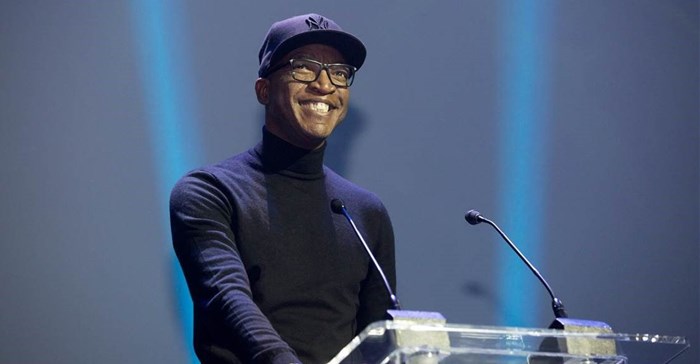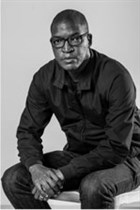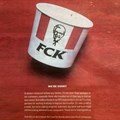Marketing & Media trends
Industry trends
BizTrends Sponsors
Trending
 New Chinese cars are everywhere – but are they tough?Nicholas Pillay
New Chinese cars are everywhere – but are they tough?Nicholas Pillay



 Vicinity Media: How we use DOOH in our retail solutionSharné Daniels, Chanté Naidoo & Olav Westphal
Vicinity Media: How we use DOOH in our retail solutionSharné Daniels, Chanté Naidoo & Olav Westphal
#BizTrends2019: The year creatives will hack bravery

Think about it. Throughout history, people have stood up to risk and fear, and gone on to do amazing things – some have even changed the world.
I’m talking about such diverse icons as Nelson Mandela, Martin Luther King and Caster Semenya.
With so much that sets them apart, let’s start by looking at what they have in common.
They were all driven by belief in an idea, cause or purpose bigger than themselves. They all accepted the real risk of failure, and some even faced death for doing so.
But most importantly, they were all ordinary human beings. Just like us.
Lessons in bravery
So what does that teach us about bravery?
Firstly, that bravery has a formula.
Secondly, that it can therefore be replicated and cultivated, both within ourselves and others.
Here’s how we can crack the code for bravery...
Bravery happens when belief in an idea, cause or purpose overrides our instinct for self-preservation.
The greatest example we have from recent history can be found in Nelson Mandela’s Rivonia Trial speech of 20 April, 1964.
The ingredients for bravery remain forever eloquently captured in his closing remarks.
I have cherished the ideal of a democratic and free society, in which all persons live together in harmony and with equal opportunities. It is an ideal I hope to live for and to achieve. But if need be, it is an ideal for which I am prepared to die.We are wired for self-preservation.
That’s why our brains won’t trust us to control the functions that keep our bodies alive. Our heartbeat and breathing, our senses and adrenaline. That’s why my first instinct when asked to speak at an event is usually to say ‘No’. Because with public speaking comes a serious risk of public failure.
You know that voice very well:
“Will they find me boring? What if I lose my job over this? Will this get us sued? Is it because I’m black? I’m just a woman.”
The results of truly being brave only come when we overrule those thoughts but self-preservation is the default setting in our day-to-day lives, in the choices we make in our personal relationships and in our work.
So how do we hack the one primal instinct we share with all living things? It takes three steps:
Step 1: Kill self-preservation
Unlike all other living things, we have a way to hack the system:
It’s called hope. Hope that tomorrow will come, and that it will be better than today and yesterday. Hope sparks our imagination, and that, in turn gives rise to ideas. From fun, interesting ones like candy floss and Afrobeat; to hardworking, useful ones like money and air travel; and big, important ones like new feminism and fighting racism.
But you’ll notice that the most enduring ideas are not centred on any one individual.
They are much bigger than that and the result of turning our attention to others – our brands, our consumers, our children, our continent.
It then becomes about the contribution we make and the ideas that will outlive us.
It becomes about legacy. And that’s way bigger than ourselves. And here’s the trick: Self-sacrifice is actually the highest form of self-preservation.
With self-preservation out of the way, we can go to the next step.
Step 2: Turn ‘safe’ into ‘brave’
Ideas on their own are not enough. They need to be grown. To do that, we have to remove ourselves and our insecurities, prejudices and cynicism out of the way in order to create safe spaces.
Because emotional safety leads to difficult conversations.
When we talk about sacred cows and the elephant in the room, we stop being ostriches with our heads in the sand.This work by P&G is my favourite example of what can happen when those conversations happen:
So if we believe in an idea bigger than ourselves, and we’ve had the difficult conversations, we’re just one step away from being certified ‘brave’.
But first we need to face our greatest foe: Fear.
Step 3: Make fear your bitch
Fear shows up in many ways. Sometimes blinding and irrational, but mostly soft-spoken and very convincing.
“Why rock the boat?” “Maybe next year.” “It’s not my decision.”
The only way around fear is to call its bluff.
Imagine the worst possible outcome, and be OK with it.
When we do all three of these things:
1. Back an idea bigger than ourselves.
2. Create safe spaces for difficult conversations to happen.
3. Acknowledge risk and embrace failure.
We stop being cover bands and become innovators. We become certifiably brave.
This battle scene plays out every day in our lives, and can teach us a lot about bravery.
Let’s keep in mind the following lesson from Braveheart, as we aim for more creative bravery in 2019:
Bravery is not the absence of fear. It is riding that fear as far from your comfort zone as possible.







